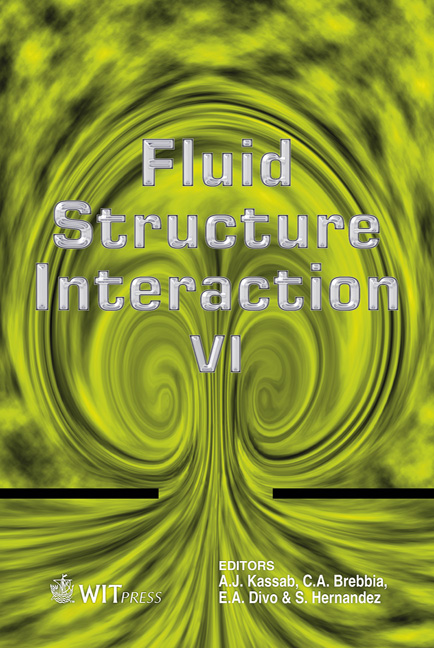Recent Developments On Bridge Flutter Stability Estimation Accounting For Errors In The Aeroelastic Loading
Price
Free (open access)
Transaction
Volume
115
Pages
12
Page Range
219 - 230
Published
2011
Size
537 kb
Paper DOI
10.2495/FSI110191
Copyright
WIT Press
Author(s)
L. Caracoglia
Abstract
State-space stochastic modeling (Itô-type) is employed in this study to numerically investigate the relevance of modeling errors in the aeroelastic loading on the flutter stability of a long-span bridge. The main features of the numerical model are: (i) linear time-domain representation of aeroelastic load based on indicial-function formulation, perturbed by a suitable \“parametric error”; (ii) turbulence-induced buffeting load still retained in the dynamic equations; (iii) linear bridge response restricted to fundamental bending and torsional mode of the moving deck and cables. The flutter velocity is determined by using the definition of second- and third-moment stability of the random dynamic vector. A simplified bridge model is employed to investigate the feasibility of the proposed approach. Two numerical algorithms for the solution of stochastic stability are implemented. The comparison of the results is based on statistical properties of the random state vector at incipient flutter (initial time), which includes the \“parametric error” variable. Keywords: long-span bridges, flutter, modeling errors, stochastic calculus, moment stability. 1 Introduction Long-span bridges are large-period and low-damping complex structures, affected by wind hazards. Accurate assessment of flutter velocity is of relevance to the bridge designer, since this phenomenon may lead to structural collapse. Recent studies by the author aim at the development of numerical methods for
Keywords
long-span bridges, flutter, modeling errors, stochastic calculus, moment stability





